Traveling to Everest Base Camp is one of those bucket-list adventures that transforms even the most seasoned hikers into wide-eyed explorers. For 12 days, guided by knowledgeable experts, you’ll traverse Nepal’s Koshi Zone, from the bustling town of Lukla to the iconic foot of the world’s tallest mountain. Priced at $838 per person, this trek offers a comprehensive look at the Himalayas, Sherpa villages, ancient monasteries, and unforgettable vistas of Mount Everest.
What we particularly love about this trek is how well it balances challenging altitude gains with well-timed rest days, making it accessible for those prepared for a moderate physical challenge. We also appreciate the inclusion of necessary permits, ground transportation, and accommodations, which simplifies planning. That said, the trek requires basic physical fitness, and the basic lodges along the route mean travelers should be comfortable with simple amenities.
This experience suits travelers eager for an authentic, adventure-packed journey into one of the world’s most remote and awe-inspiring regions. It’s ideal for those looking for a guided, well-supported trek that emphasizes both mountain scenery and culture.
Key Points
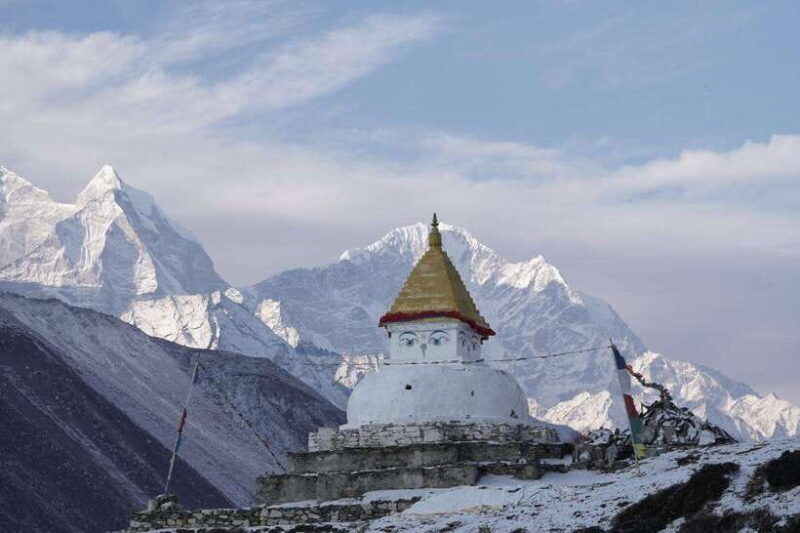
- Authentic Himalayan Experience: Trek through Sherpa villages, ancient monasteries, and breath-stealing mountain views.
- Well-Structured Itinerary: Includes acclimatization days, ensuring safety at high altitudes.
- Inclusive Package: Covers permits, transportation, guides, porters, and meals, providing good value.
- Limited Basic Lodging: Expect simple accommodations, typical of high-altitude trekking.
- Focus on Safety: Includes necessary permits, guides, and acclimatization to minimize altitude risks.
- Best for Moderate Hikers: Suitable for those with a decent level of fitness and a love for authentic adventure.
A Detailed Look at the Trekking Experience
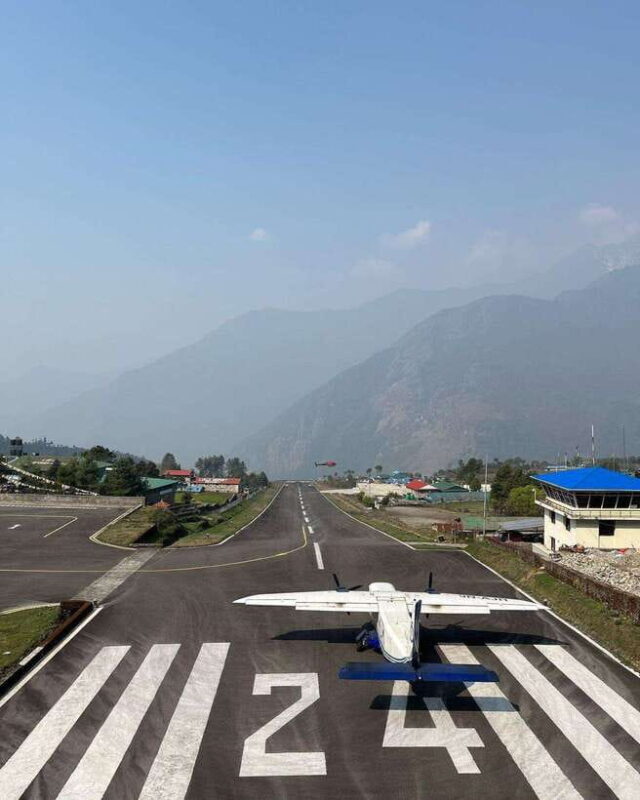
Love the outdoors? Here are other hiking experiences we've covered in Namche Bazar
Starting the Journey from Lukla
The trek kicks off with a flight from Kathmandu to Lukla, a tiny airport famous for its dramatic landing strip perched on a mountain ledge. This flight alone is worth the trip, offering stunning aerial views of the Himalayas. Once in Lukla, you’ll begin your walk along the Dudh Koshi river valley, a route lined with lush forests and charming villages. We loved the way the landscape slowly changes from the dense green of lower elevations to the stark, rugged terrain higher up.
Namche Bazaar — The Sherpa Nerve Center
The highlight of the early days is reaching Namche Bazaar at 3,440 meters. This bustling town serves as the gateway to Everest and the cultural hub for Sherpa traders and climbers. Here, you’ll find lively markets, cozy teahouses, and the perfect place to rest and acclimate. We appreciated the included rest day here, which is crucial for adjusting to the altitude and avoiding altitude sickness. The views from Namche are extraordinary, with peaks like Thamserku and Kwangde dominating the skyline.
The Sacred and Remote Monasteries
Throughout the trek, you’ll encounter ancient monasteries perched on hilltops or tucked into mountain slopes. These spiritual sites provide a glimpse into Sherpa traditions and Buddhist practices. Visiting these monasteries offers a peaceful contrast to the rugged outdoor adventure. One reviewer noted, “The monasteries are a highlight—so peaceful and full of history. You can truly feel the spiritual presence.”
More Great Tours NearbyThe High Passes and Key Stops
As you ascend toward Dingboche at 4,260 meters, the trail becomes more exposed but still manageable thanks to the well-planned itinerary. The next stages of the trek involve crossing Kala Patthar at 5,545 meters, renowned for its panoramic views of Everest and Nuptse. From here, you’ll see the world’s highest mountain in all its glory—an experience that leaves a lasting impression. Prepare for a steep climb and some challenging altitude, but the views are worth every step.
Reaching Everest Base Camp
In the final days, you’ll traverse through Lobuche or Gorakshap, slowly gaining altitude to reach Everest Base Camp at 18,192 feet. The camp itself is a bustling gathering point for climbers preparing for their summit attempt. While not a place to stay overnight, standing at the foot of Mount Everest is a moment of pure awe—an achievement for many. Trekking here involves more days of gradual ascent, emphasizing the importance of acclimatization and safety.
Return and Reflection
The descent offers the chance to reflect on your journey, with ample time to enjoy the mountain scenery and Sherpa hospitality. Many travelers mention the sense of accomplishment and the bonds formed with fellow trekkers and guides.
Practical Aspects and Logistics

Transportation and Guides
Your package includes airport pick-up and drop-off in Kathmandu, plus all ground transportation during the trek. The guides are professional and speak English, making navigation and explanations clear. The group size is private, meaning it can be tailored to your preferences, and the small group setting fosters a more personal experience.
Accommodation and Meals
Accommodation is in lodges along the route, which are basic but comfortable enough for rest after a day’s hike. Meals—breakfast, lunch, and dinner—are included, giving you energy for each day’s trek. Expect simple, hearty Nepali and Sherpa dishes, with some travelers noting that the meals are satisfying after long days of walking.
Cost and Value
At $838, this trek offers good value considering the inclusive nature: permits, guides, porters, accommodations, and meals are all covered. The quality of the guides and the support team helps justify the cost, especially since independent planning could easily add up with permits and transportation alone.
What to Expect in Terms of Physicality and Preparation
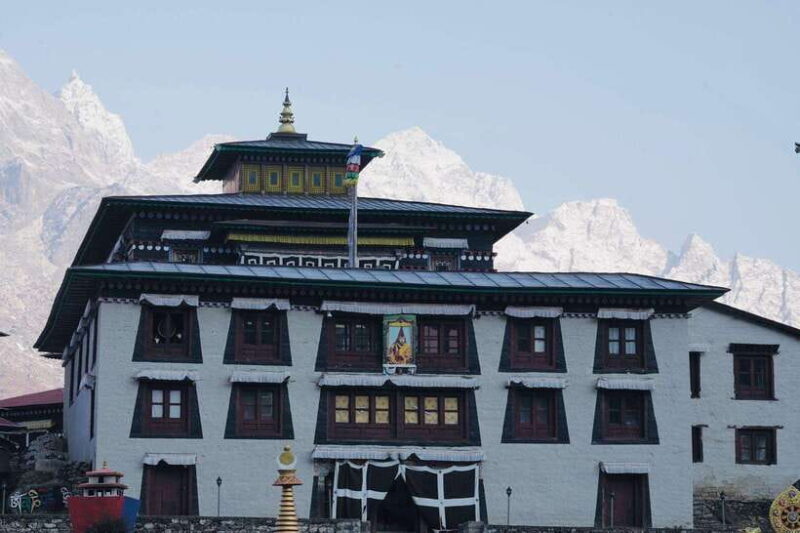
The trek demands moderate fitness and comfort with walking for several hours daily at high altitude. You will climb over varied terrain, including steep ascents and rocky paths. Altitude acclimatization days are built into the plan, which is essential for safety. Travelers often mention that with proper preparation, the trek is manageable, but it’s not suited for those with mobility issues or serious health problems related to altitude.
Packing Tips
Travelers find it helpful to bring warm clothing, good walking shoes, a camera, and snacks. Since weather can change quickly, packing rain gear, gloves, and layered clothing ensures you’re prepared. Carrying a reusable water bottle and enough cash for small expenses is also wise, as ATMs are scarce along the route.
The Sum Up: Who Is This Trek For?
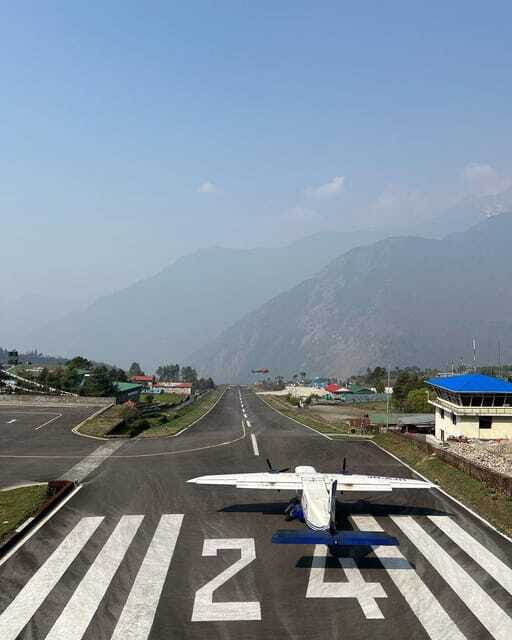
This guided Everest Base Camp trek is best suited for adventurous travelers who want a well-supported, authentic Himalayan experience. It’s perfect if you’re comfortable with moderate physical activity, prepared for basic accommodations, and eager to witness some of the most stunning mountain vistas on the planet. The inclusion of acclimatization days, permits, and guided support offers peace of mind for first-timers or those with limited trekking experience.
For those seeking a carefully planned, value-packed journey that combines mountain scenery, Sherpa culture, and adventure, this trek delivers. It is an unforgettable way to stand at the foot of Everest and gain a deeper appreciation of Nepal’s rugged beauty and resilient communities.
FAQs
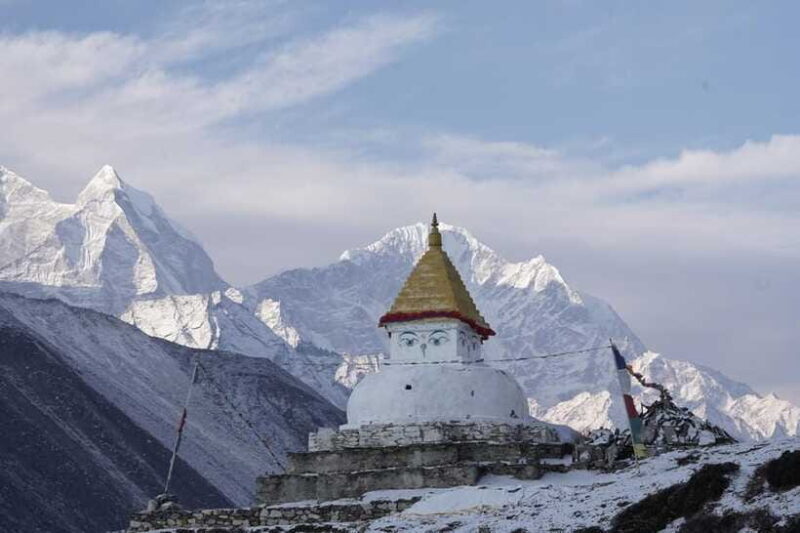
What is included in the price of $838?
The price covers airport transfers, ground transportation, necessary permits, guides, porters, accommodation in lodges, and three meals daily. It’s a comprehensive package that simplifies planning.
Are there any extra costs I should expect?
Beverages, personal expenses, insurance, and flights to Lukla are not included. You should carry some cash for small personal expenses and snacks.
How difficult is this trek?
While manageable for those in good shape, the trek involves walking several hours daily at high elevations, with some steep climbs. Acclimatization days help reduce altitude sickness risk.
Is this trek suitable for children or pregnant women?
No, it’s not recommended for children under 12, pregnant women, or individuals with mobility, heart, or respiratory issues due to altitude and terrain challenges.
What should I pack?
Bring warm clothing, comfortable shoes, sunglasses, a camera, snacks, water, rain gear, gloves, layered clothing, and a sleeping bag. Be prepared for weather changes.
How do I get to Lukla?
Your package includes a flight from Kathmandu to Lukla, offering breathtaking views of the Himalayas. Keep in mind that flights can sometimes be delayed due to weather.
This guided trek to Everest Base Camp offers a well-rounded, authentic Himalayan adventure. It combines stunning scenery, cultural insights, and the thrill of reaching one of the world’s most iconic destinations—an experience that will stay with you long after the mountains fade into memory.
You can check availability for your dates here: